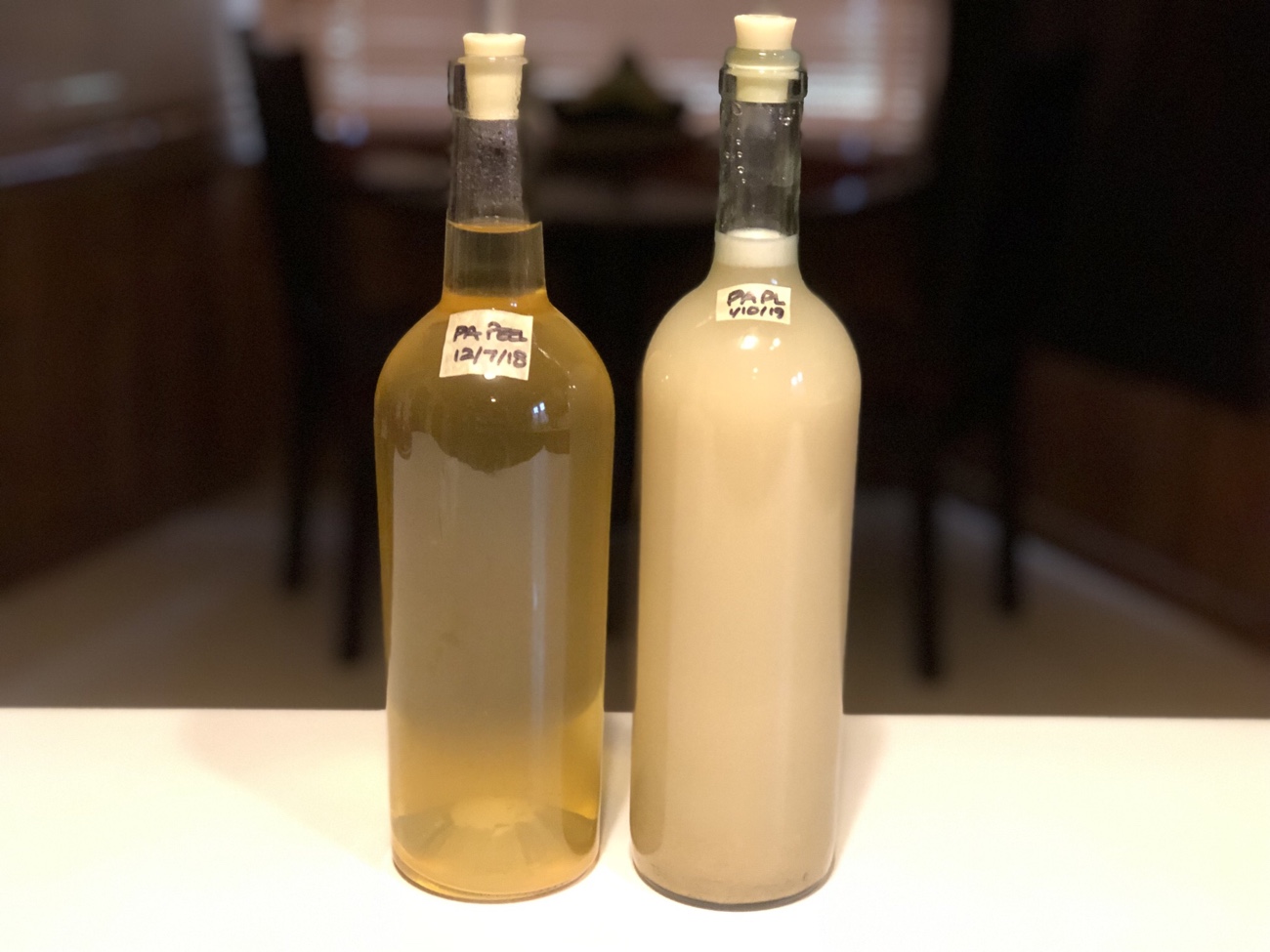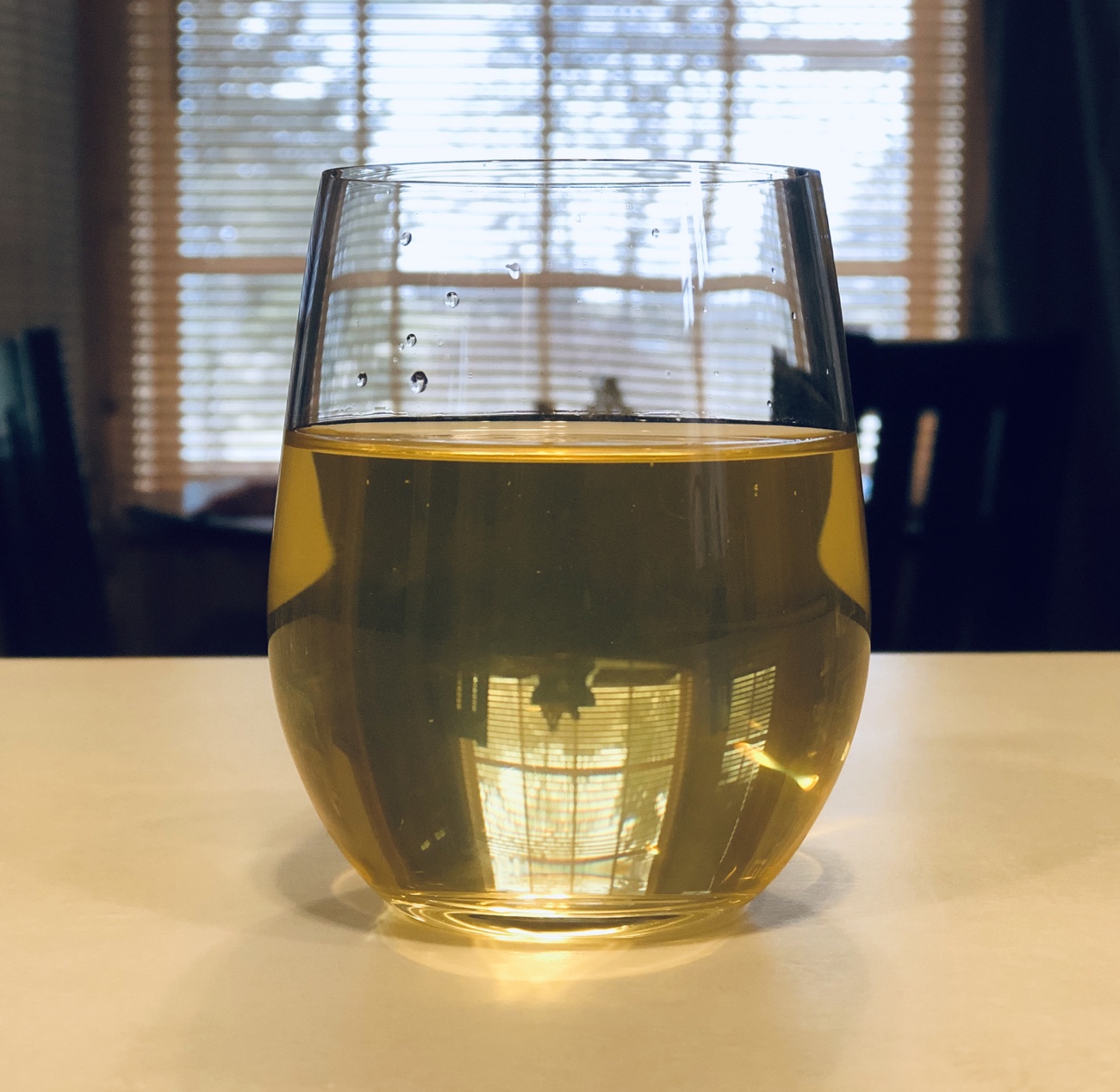
A couple of months ago, I made a batch of pineapple peel wine and added a yeast slurry that just didn’t seem to take off. It had been refrigerated, slowing the activity. Sometimes, sluggish yeast never really takes off, so I grabbed a fresh container of slurry from the shelf and pitched it in. Then I realized that it wasn’t actually wine yeast…it was bread kvas yeast!
Are you wondering how something like that happens? The explanation is simple: it wasn’t labeled. I typically label each jar of slurry with the type of wine it came from (so I know which flavors it may impart) and the date. Because I had been adding some of the kvas yeast back into the drink at the time of pouring – so I could control how yeasty I wanted it to be – I left it out at room temperature. And unlabeled.
When the wine must had cooled to room temperature, I grabbed the unrefrigerated slurry from the shelf, thinking it would be good and active. I also thought it was from a recent batch of banana wine, and would impart a complementary flavor. In and mixed.
It was only later, when I was looking for the kvas yeast slurry, it had mysteriously disappeared. I then checked the fridge and found the (labeled) banana slurry I thought I’d put in the pineapple peel wine. And realized what had happened.
Despite the mishap, I decided to let this one play out. Some of the possible outcomes:
- The kvas yeast fails to ferment the must properly, resulting in an utter wine fail
- The kvas yeast ferments the must, but produces a very low-ABV, but drinkable, wine
- The kvas yeast produces undesirable flavors in the wine and it’s simply not drinkable
Experiments can teach us something, so we’ll see where this one goes. The kvas yeast is bread yeast, so it’s definitely not ideal for winemaking. Lesson already learned: label everything.

Wondering how it turned out? I was a little surprised: it cleared to a warm gold, looking very similar to pineapple peel wine made with actual wine yeast. The flavor is where it’s different – it still tastes like “regular” pineapple peel wine, but with a hint of grain, probably rye. The effect is very pleasant, but it adds an almost beer-like note. Fortunately, since pineapple peel typically isn’t a sweet or fruity wine, it works.

It seems that, sometimes, a mishap can have a positive outcome. Cheers!

Comments are closed.